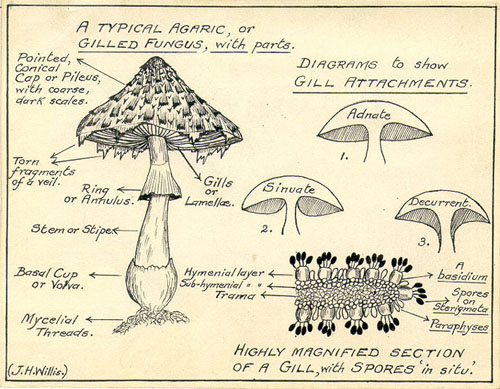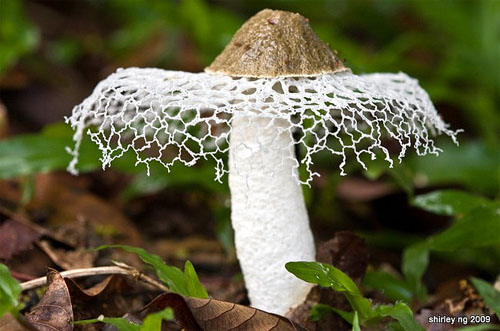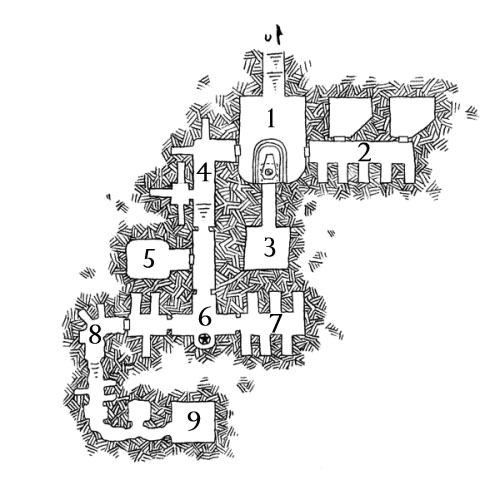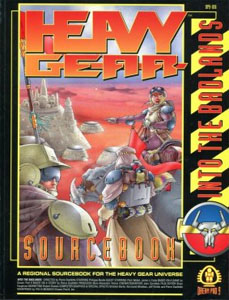I’ve been watching After Life: The Science of Decay, which is a really fascinating BBS documentary. The link there will take you to a point in the middle of the video which showcases a couple of interesting real-life fungi which, with a little fantasy twist, could be made very interesting challenges for your PCs.
Confusion Spike (CR 4): Characters within an area infested by the airborne spores of the confusion spike must make a Fortitude save (DC 15) each minute or become infected. Once infected, the spores will grow rapidly within the character’s mind, creating alchemicals that control and disrupt the victim’s behavior. 2d6 rounds after exposure, the victim will become confused (as per a confusion spell). 2d6 rounds after that, they must make a second Fortitude save (DC 15): On a success, they have recovered from the infection. On a failure they die.
Characters who die while under the effects of the confusion spike (either due to the effects of the fungus or otherwise), rapidly exude the fruiting body of the fungus. 1d4 rounds after death, this takes the form of a long, narrow spike which bursts through the character’s skull and grows rapidly to a length equal to roughly three times the character’s body length over the course of 2d6 rounds.
4d6 minutes later, the top of the fruiting body will explode spreading spores in a radius equal to the length of the fruiting body. These spores create a new infection zone, which can linger in the air for years or even decades. (Although they dissipate more quickly in outdoor environments.)
Dwarfbane (CR 1): This magical fungus, reportedly a tainted byproduct from certain rituals used to enchant magical arms and armor, breaks down metallic items in a cycle of decay. It was named dwarfbane after a strain of the fungus infested the rich veins of Dharballa and completely destroyed the dwarven city’s mines. Efforts to contain the infestation failed and eventually — broken and impoverished — the entire city of Dharballa was abandoned. Today there are many dwarven cities that will still refuse entry to any dwarf of Dharballa out of fear they will bring banespore with them.
Metallic items that touch dwarfbane become infested. Magic items made of metal can avoid infestation with a successful Reflex save (DC 17).
Although a great threat to dwarven cities, dwarfbane poses little threat to adventurers as long as they are wary of the danger: 1d4 hours after exposure to dwarfbane spores, a successful Knowledge (nature) check (DC 15) or Spot check (DC 25) will allow the owner of an item to notice spots of the distinctive green patina formed by the fungus. After 4d6 hours, the item will suffer 1d6 points of damage per hour until destroyed.
Objects affected by dwarfbane are rendered into a green, mossy rust. (Which, of course, seethes with dwarfbane spores.)
Fungal Snare (CR 2): These large, strong fungal growths form large loops around subterranean corridors. When a creature passes through the loop, the fungus snaps shut in a vice-like grip. If the target fails a Reflex saving throw (DC 14),they are caught by the snare, suffer 1d6 points of damage, and become stuck and entangled. The snare has AC 16, 10 hp, and requires a Strength or Escape Artist check (DC 15) to escape. A fungal snare can be detected with a successful Search check (DC 15).
Goblins have been known to specifically foster and grow fungal snares as lair wards. The goblins will carry small bags containing cuttings from the fungal snares, the presence of which prevents the fungal snares from snapping shut.
Fungal Web Droppers: Fungal webs grow on tall stalks to the ceiling of a cavern or into the lower foliage of a forest’s canopy. Once they have reached this height, their fruiting body spreads a wide, web-like indusium. When creatures pass beneath the indusium, the fungi drop their webs.
| Size | ||||
|---|---|---|---|---|
| Small (5' x 5') | Fort DC 10, 1d2 Str | |||
| Medium (5' x 5') | Fort DC 10, 1d3 Str | |||
| Large (10' x 10') | Fort DC 12, 1d4 Str | |||
| Huge (15' x 15') | Fort DC 13, 1d6 Str | |||
| Gargantuan (20' x 20') | Fort DC 16, 1d8 Str | |||
| Colossal (30' x 30') | Fort DC 20, 2d6 Str | |||
| Colossal+ (50' x 50') | Fort DC 28, 2d8 Str |
The table lists the size of the web and the maximum size of the creature that can be trapped by the web. Creatures beneath the web are affected as per a web spell, except using the DCs listed on the table. The web is also coated with a contact poison, afflicting anyone caught in the web or trying to tear it apart with their bare hands.
The tall stalks of fungal web droppers are usually easily noticed, although a Knowledge (nature) check (DC 18) is required to recognize the danger. Some fungal web droppers have stalks which camouflage themselves as stone columns or tree trunks, requiring a Spot check (DC 20) to notice. A Spot check (DC 30 – 2 per size category) will suffice to notice the overhanging webs.
Fungal Snare Webs: Fungal snare webs are similar fungal web droppers, except their webs remain attached to the fruiting body of the fungi and will attempt to draw those caught in the web up into the air. Characters who fail their initial Reflex throws are drawn a random distance into the air. Increase the Escape Artist and Break DCs by +5.

















